- Home
- Richard F. Weyand
EMPIRE: Resurgence Page 5
EMPIRE: Resurgence Read online
Page 5
“Well, I must say that’s a surprise,” she finally said.
“It surprised me, too, Maire. When other sectors had barriers against us, we needed our own, but when all the barriers came down under Imperial orders, it actually helped us.”
“It’s the same thing I’m hearing from our other companies. Some, like you, aim at the high end of the market. Some aim at the low end of their market, though, and we see the same thing happening.”
“Really,” Flinn said.
“Oh, yes. They’re moving into out-sector down-market segments, where you’re moving into the up-market segment for your products, but it’s much the same thing.”
“Now that’s interesting. So manufacturers in our out-sector market are seeing us cutting into their high-end sales, but they are moving into our low-end market and quite happy about it.”
“I think that’s right, Conor. You would think that would increase frictional costs, because of the longer shipping distances, and reduce overall demand in the segment, but overall demand must be increasing, or both of those couldn’t be true.”
“The other thing that comes out in the data is that customers – both the ones we lost and the ones we gained – are happier than they were before. They can now buy the product they really want, whether that means high-end or low-end. And even most of our in-sector business was interstellar. Once the freight’s on-board, time in transit is not a significant extra cost.”
Kerrigan nodded.
“OK, that makes sense.”
Kerrigan looked over the numbers once more. Flinn was content to sit and wait. Finally Kerrigan dropped out of VR again.
“All right, Conor. I think that’s all my questions for this time. I’ll see you next quarter.”
“Of course.”
Kerrigan sat and thought more about those results once Flinn had left.
Colin Flinn was a good man, but he had clearly been caught by surprise by this turn of events. They would have a hard time filling all the orders in a timely way. That was a good problem to have, but it wouldn’t have been a problem if they had planned for it.
Then again, none of her other CEOs had seen it coming either, nor had she herself. They had been caught out by the simplistic assumption that the loss of protective barriers would result in reduced sales. And it had, on the short term. For the first several months after barriers were dropped, their domestic in-sector business had been hurt. People had held up buying, waiting to see what would happen and exploring other sources. Sales fell, in some markets drastically.
But people in other sectors had done the same. And when purchasing picked up again, some of them had come to CM&M to buy. After the initial drop in orders, orders had jumped, but now they were primarily from new out-sector customers.
Even during the forced monopoly trade barriers had created, Kerrigan had emphasized the need to keep the quality up at Connacht Machinery and Manufacturing. One of her other companies did big construction jobs in the sector, and she had wanted a source of quality equipment for that company. If CM&M didn’t provide it, that company had nowhere else to go.
That emphasis on quality is what was driving out-sector sales now. Of course, if she had told them to concentrate on price, that would have driven out-sector sales, too, based on the performance of some of her other companies, who aimed lower in their market segment.
She had to admit, whatever her other complaints with the Empire, Their Majesties’ trade policies were good for business.
Back in Imperial City
The three beach bums – Geary, Benton, and Boyle – were back in Imperial City a week before required, just to get their things in order and get their minds back into school mode after spending the summer more or less living on the beach. It was taking some adjustment.
“It feels weird just to be wearing clothes again,” Benton said. “All we wore all summer was swim shorts.”
“Which we need to replace, by the way,” Geary said. “No way those will pass inspection. We wore them out. They’re falling apart.”
“I am enjoying real food again, though,” said Boyle, sprawled across the armchair in Geary’s apartment. “Beach shop food leaves much to be desired.”
“It was all right at first, but it does get old,” Benton said.
Benton sighed, then went on.
“OK, a week to go before report. What are we going to do now?”
“One thing I want to do is go through the Imperial War Museum for the last time,” Geary said. “They’re going to remodel and refurbish it, and it’s going to be closed for the whole school year.”
“No kidding?” Boyle said.
“Yeah,” Geary said. “Colonel Ryan proposed a major remodeling, and he got approvals. I heard he’s been preparing all summer. Once the kids are back in school, though, he’s going to close it for the school year. It’s going to be a lot of work.”
The mention of Colonel Ryan – who was actually Boyle’s great uncle Ian Walsh – got Boyle’s attention. What was he up to? Was this just his normal duty or did it tie into the family somehow? He didn’t betray his interest with his next statement, however.
“I’ll say. Fifteen floors of exhibits? Are they going to work around them?”
“No,” Geary said. “The exhibits are being sent out for refurbishment as well. They’re going to more or less empty it, then reinstall everything. All except for the really big stuff. That’s what I hear, anyway. But I want to go once more before they close it down.”
“But you’ve been through the museum a bunch of times already,” Benton said. “I don’t get it. What’s so compelling about it?”
“Have you ever been there?” Geary asked.
“No,” Benton said. “Never felt the attraction, I guess.”
“Oh, you have to come with us, then,” Boyle said. “Lots of interesting stuff.”
“All history. Boring,” Benton said.
“Including the history of Imperial war technology,” Geary said. “All the weapons and ship models and such, going back a thousand years.”
“Well, that sounds all right I guess,” Benton said, shrugging. “OK, I’m in.”
“Whaddya think? Tomorrow?” Boyle said, looking back and forth between them.
“Yeah,” Geary answered. “My duties start before yours. I’m surprised I’m not swamped already.”
“Sure. Why not,” Benton said.
They entered the Imperial War Museum through the arcade level entrance, which was no more than an escalator lobby to the main floor at street level. They used their Imperial Marine Academy IDs for free entrance to the museum, then went from the lobby on through into the main display floor. Several tanks and Armored Personnel Carriers from different eras were arrayed on the floor.
“OK, now this is pretty cool,” Benton said.
Boyle eyed the big guns on the tanks.
“What if somebody put a round in one of those babies and wicked it off?” he asked.
“Basic rule of artillery. Never shoot at a building from the inside,” Benton said. “Bad things happen.”
They walked down between the tanks and the APCs, rubbernecking at the vehicles and pointing out the evolution of the vehicles over time to each other. At the end of the aisle, a custodian stood watching them.
“Good morning, Mr. Stinson,” Geary said.
“Good morning, Sir. Getting one last look before we close for remodeling?”
“Yes. I thought I would give myself one good tour to tide me over.”
The custodian nodded.
“What about you?” Geary asked. “Are you without a job while they work on the museum?”
“No, Sir. There’ll be plenty to do while they’re working. They’ll still need me to keep an eye on things.”
“Good. I worried about you, Mr. Stinson. The prospect of you being out of a job and all for the year.”
“No worry, Sir. I’ll be around.”
The trio went up to the next level. Once out of earshot of the custod
ian, Benton had a question.
“Mr. Stinson?”
“Well, it’s either that or Sergeant Major Stinson. Of Their Majesties’ Imperial Marines. Combat Medal. Retired, of course. Wears his uniform on Founders Day. But I won’t deny him the respect he’s due, in uniform or not.”
“Ah. Makes sense.”
When they got to the floor covering the Sintar-DP war, there was a display of large scale models of the Imperial and DP warships involved, contrasting the previous designs with the radical new designs each side fielded in that war. Benton pointed out the departures from standard designs the two sides used, and why the Imperial ships were better suited to the war in which they found themselves.
“The Empire and the DP went in two different directions with their warships. The Empire went to unmanned ships, and stripped out all the crew quarters, the mess halls and recreation areas, the food and potable water storage, the environmental systems, even the radiators that radiate waste heat away so the crew quarters can be kept cool. The ship became nothing more than a missile impeller with engines and reaction mass, with the impeller sticking way out in front.
“These side thrusters, seventy-percent out the protruding part of the impeller, made them incredibly quick on the helm. And they could accelerate at six gravities, because they didn’t have to worry about fragile human crew. It was a very quick and mobile missile platform.
“The DP went almost exactly in the other direction. They made their ships bigger. Much bigger. Four impellers aimed out the front, two more aimed out the back. All the personnel and magazine space to support them. Bigger engines to handle the heavier ship. Bigger radiators. More food and water storage for the bigger crew, and more reaction mass storage for the bigger engines.
“The DP ships were still limited to about two gravities by the presence of the human crew, and they were very slow on the helm. It just took a long time to get such a heavy ship turned.
“So it was much like the heavy galleons of the Spanish Armada against the light English ships of Sir Francis Drake. The Spanish ships had more guns, but they were just to slow on the helm to be a credible threat to the English ships.”
On that floor there was also a display of HARPER units, the remotely controlled repair units that allowed the Empire to field unmanned warships, in that war and since.
“Those are kind of cute,” Boyle said. “Like little robots. Little mechanical men.”
“Well, they aren’t that little,” Benton said. “They couldn’t be if they were going to reach the equipment racks to do repairs.”
“No, but you know what I mean. With the twin cameras and arms and all, they look a little like people.”
“That was part of the design,” Benton said. “They had to use access ways designed for people, use equipment made for people, be able to service equipment made to be serviced by people. Simplest way to do that is to make artificial people. Close enough, anyway.”
Also on the floor dedicated to the Sintar-DP War was a display of a ship-to-ship missile. It was thirty feet long and more than five feet in diameter.
“Wow, just look at that,” Boyle said. “I can never get over how big it is. When you see a model of a ship launching missiles, or an artist’s drawing of a ship firing missiles, they look so tiny. But that’s huge.”
“Yeah, all of that just to accelerate this,” Geary said, waving toward the display of a decommissioned warhead on a stand next to the missile.
“Accelerate it at ten gravities, and deliver it on target,” Benton said. “That’s the hard part. All this has to do is blow up.”
“Speaking of which, how do we know that this warhead is really decommissioned?” Boyle asked.
Benton walked up to the display and set his hand on the warhead.
“It’s decommissioned. It’s cool to the touch. Just a chunk of cold steel. If the pit was in it, it would be a bit warmer.”
“The pit?” Geary asked.
“Yeah. To set off a fusion bomb, you need a fission bomb. Only thing that can get hot enough and deliver enough pressure. But a fission bomb will always have a chunk of uranium or plutonium in it. About the size of a bocce ball. That stuff is radioactive – enough so that it’s warm to the touch. The whole device would be a little warm, but it’s not. So, no pit.”
“Is the fusion fuel still inside it, though?” Boyle asked.
“Doesn’t matter,” Benton said. “No pit, no kaboom.”
“I thought you weren’t taking the weapons engineering courses until this year,” Geary said.
“That’s right,” Benton said. “But everybody knows that much.”
“I didn’t,” Boyle said.
“But you’re nobody,” Benton said. “From an engineering perspective, anyway. You haven’t studied any of this stuff.”
“What detonates the pit?” Geary asked.
“Buncha flash bulbs,” Benton said.
“Flash bulbs?”
“Yeah, kinda. The initiators act just like flashbulbs, but instead of emitting light, they emits slow neutrons. See, if you have enough plutonium or enriched uranium in one solid mass, it blows up. Supercritical mass.”
“OK, that I knew,” Boyle said.
“That’s because the stuff emits neutrons normally, but not enough to carry on a chain reaction,” Benton said. “As the size increases, there is more and more mass to generate neutrons, and the neutrons have to pass farther through the bigger mass to get out. So as the mass gets bigger, the neutron flux at any point in the solid goes up. At some point it’s enough for the thing to take off. That’s critical mass. Make it supercritical, and it takes off in a big way. Making a supercritical mass is hard, though, ‘cause it wants to blow itself apart before it can get really going.”
“Flash bulbs,” Geary prompted.
“Yeah, I was getting to that. So there’re these widgets, called initiators, look like some kind of strobe light or flash bulb. The filament is one thing, and there’s a pressurized gas in there, and some other stuff. When you hit them with enough voltage, the metal filament vaporizes, and the vaporized metal and the heated gas interact and release a whole lot of slow neutrons. Now, because of the neutron flux being so high, the pit thinks it’s in the middle of a supercritical mass, and it goes off.”
“Which sets off the fusion device,” Boyle said.
“Right. Except there’s only so big that can go, so to get ten megatons like this one, that fusion device sets off a bigger fusion device. One that’s too big for a fission bomb alone to set off. So this is actually a three-stage fission-fusion-fusion bomb.”
“But no pit,” Boyle said.
“Right. It’s not warm, so no radioactive pit, which means it’s inert.”
“OK. Got it,” Boyle said. “I thought you said this was the easy part.”
“Oh, it is,” Benton said, then gestured back at the missile. “That is what’s complicated.”
They finished their walk-through of the museum and headed back down to the lobby and the escalator down to the arcade entrance. On the way, they ran across Stinson again.
“We’ll see you next time, Mr. Stinson,” Geary said.
“It’ll be a while, Sir, but don’t worry. We’ll get it all squared away for your next visit.”
On the way back to the residence hall building, Benton made a major concession.
“Well, I have to admit, that was a lot of fun. I guess history is OK after all, as long as it’s the history of engineering.”
Geary and Boyle both laughed.
Family
Ardmore and Burke had stayed in touch with their families over VR during the tumultuous events of the last eight years. They suspected their families had not quite believed their stories of working with the Emperor Augustus VI on Imperial reforms, even as those reforms rolled out across the Empire. That had all changed when they were actually named the Emperor and Empress. The coronation that followed had put an end to any doubts.
Ardmore was the last of five children. His
four older sisters had all been married and producing offspring for years by the time he and Burke started a family. With all the rest of the grandchildren on Lucerne, in the Vandalia Sector, Ardmore’s parents were firmly ensconced on their home planet.
With free room and board and nothing to spend money on, Ardmore had sent serious money home regularly since he landed the high-paying job of Court Historian and Personal Adviser to Augustus VI. That had allowed his parents to move up from the small house in which he was raised to a larger and newer house suitable for entertaining their growing brood of grandchildren on Lucerne.
Ardmore had attended in projection when he was able, having paid the cost of having a projector installed in their new home. Once he and Burke had become a couple, she had joined him on these family visits.
Burke’s family situation was entirely different. Her grandfather had lived with them, and with his military retirement and her parents’ own incomes, they had done fairly well. Her older brother and his wife, though, had decided not to have children, and her younger brother had not yet settled down.
One by one the kids had left, then her grandfather had passed last year. Once her grandfather was gone, the house, which had always been so full of family, seemed empty to her parents. Now with a grandchild on the way, Burke had talked to Ardmore about it. He had also attended family get-togethers with her family via projector, and got along well with her parents. With his encouragement, she had invited her parents to come to Center and live in the Imperial Palace.
Gregory Posten and Mary Anne Burke had hemmed and hawed about uprooting themselves from Moria and moving so far from Phalia Sector. But once Burke became pregnant, Mary Anne’s focus changed. Posten was more than willing to go along with the plan, but it did take some time to say goodbye to friends and family, set aside the things they would take along on the move, and empty out and sell the house.
The chauffeured car pulled up in front of the house. A van for all their luggage pulled up behind it. Mary Anne had gotten them into four trunks for the move, plus two suitcases for things they would need during the trip. She had worried about the cost of interstellar travel with so much luggage, but Gail told her not to worry about it. Bring whatever she needed to feel at home, Gail had said, and so Mary Anne had.

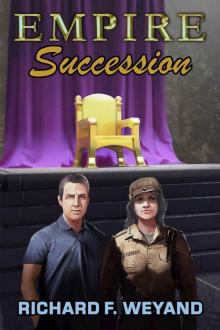 EMPIRE: Succession
EMPIRE: Succession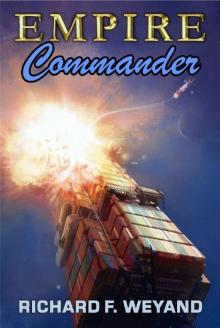 Commander
Commander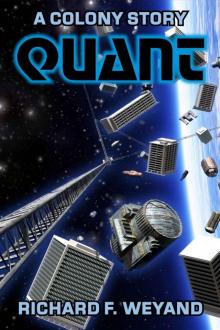 QUANT (COLONY Book 1)
QUANT (COLONY Book 1) EMPIRE: Renewal
EMPIRE: Renewal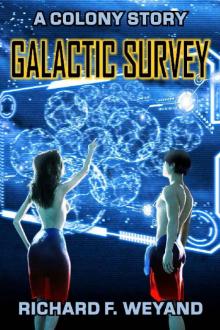 GALACTIC SURVEY (COLONY Book 3)
GALACTIC SURVEY (COLONY Book 3)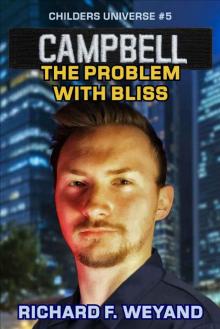 Campbell- The Problem With Bliss
Campbell- The Problem With Bliss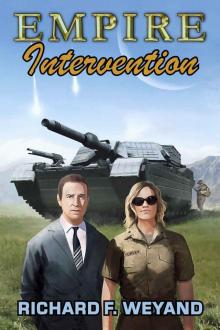 EMPIRE: Intervention (EMPIRE SERIES Book 13)
EMPIRE: Intervention (EMPIRE SERIES Book 13)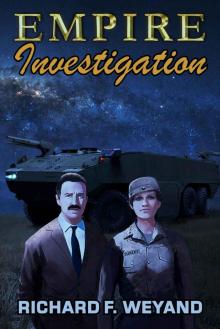 EMPIRE: Investigation
EMPIRE: Investigation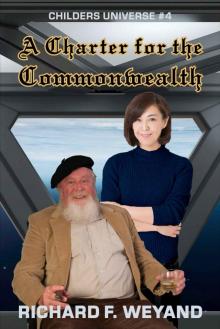 A Charter for the Commonwealth
A Charter for the Commonwealth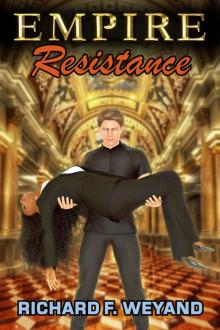 EMPIRE: Resistance
EMPIRE: Resistance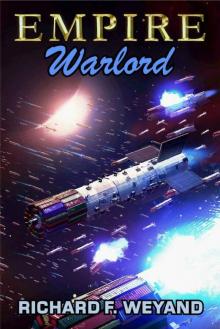 EMPIRE: Warlord (EMPIRE SERIES Book 5)
EMPIRE: Warlord (EMPIRE SERIES Book 5)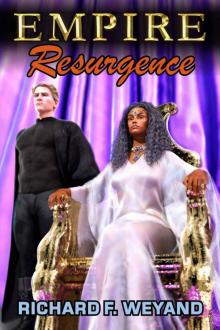 EMPIRE: Resurgence
EMPIRE: Resurgence EMPIRE: Conqueror (EMPIRE SERIES Book 6)
EMPIRE: Conqueror (EMPIRE SERIES Book 6)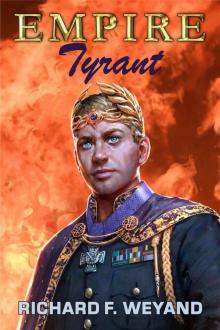 Tyrant
Tyrant Usurper
Usurper Galactic Mail: Revolution! (Childers Universe Book 3)
Galactic Mail: Revolution! (Childers Universe Book 3) Galactic Mail_Revolution!
Galactic Mail_Revolution! Childers
Childers CHILDERS_Absurd Proposals
CHILDERS_Absurd Proposals